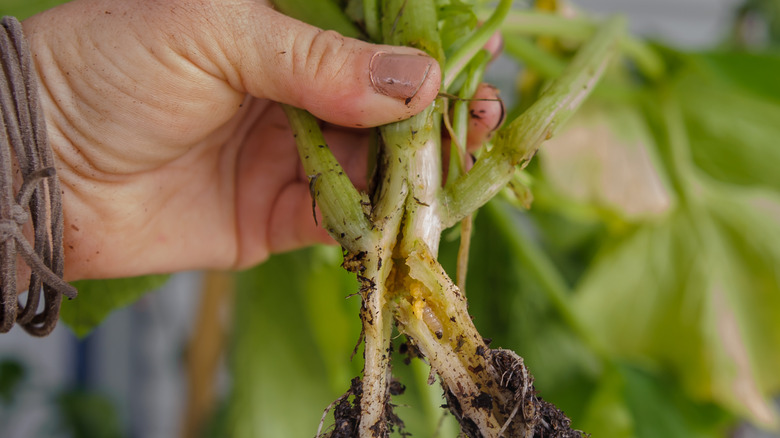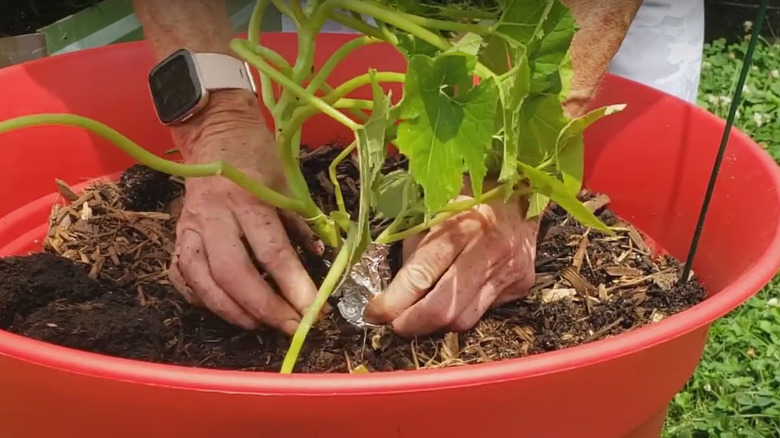The Aluminum Foil Hack That Keeps Squash Vine Borers Out Of Your Garden
Squash vine borers are some of the most common and detrimental pests to zucchini, pumpkin, summer squash, and winter squash plants. Once squash vine borers get inside, it's difficult to take back the health of a once-thriving plant. Fortunately, with just a little bit of aluminum foil, you can prevent these pests from infiltrating your vine systems and devastating your garden's growth. Put a thick ring of foil around the low parts of the plant during the early stages of growth. Instead of laying their eggs on vulnerable leaves and stems, they will instead lay clusters on the foil, which can be removed easily.
Melittia cucurbitae, more commonly known as the squash vine borer, is a moth species that lives throughout North America. They lay their eggs on the base of squash plants. Then, after 1 to 2 weeks, the cream-colored larvae hatch and begin burrowing in stems to feed for up to 4 weeks, destroying the plant from the inside. What makes eradicating this pest so challenging is that many gardeners don't notice their plant has been infiltrated until it's too late and the leaves have already begun wilting. This simple hack will prevent this from happening, thereby saving your crops from this pest.
How to utilize the hack
Because squash vine borer's larvae are the most dangerous to plants, it is critical to stop their growth before they even hatch. This aluminum foil hack is the easiest and most accessible way to do this since most people already have foil in their kitchen. Once your squash plant has established a couple of true leaves, it's time to initiate the prevention hack. Cut 4-inch long and 1 to 2-inch wide strips of aluminum foil and wrap one around the base of each plant. Make sure that the strips extend roughly a quarter of an inch below the soil's surface.
Now that these preventative measures are in place, female vine borers, which are gray and orange moths, will lay their eggs on the foil rather than the base of your plants. Be sure to keep up with this hack regularly to remove any eggs that may collect by throwing out and replacing the foil. Checking on and rewrapping the base of your plant every few weeks is also important to make sure that you aren't inadvertently girdling your plant as it grows. On the other hand, if your plant is suffering because of flat brown beetles, these are squash bugs that need to be removed using another method.

